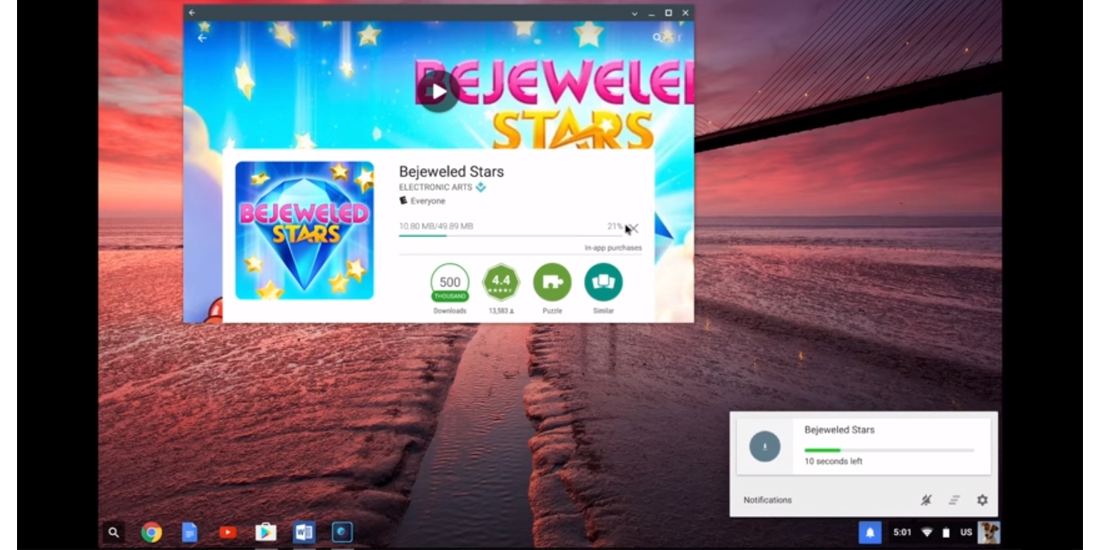One of the most interesting developments emerged during the recent Google I/O 2016 (annual conference organized by Google and dedicated, especially, to developers) had to do with a news related to the Chrome OS, in relation to its new ability to use Android applications downloaded via Google Play. Google completed this process on May 20, but was on June 3 when the Mountain View company published, on a YouTube channel for Google developers, an interesting video, which documents a technical meeting held during the conference and allows us take a look, among other things, of running Android apps on Chrome OS.
In the video (the show begins in minute 6:30 ) it shows the presence of the Play Store and the process of installing applications, virtually identical to that of Android, and support for notifications. The applications shown are moving to perfection, as if the application had been designed specifically for Chrome OS, although it is noted that this is a test performed under optimal conditions, and therefore performance may vary depending on some low-end Chromebooks.

Another important aspect and highlighted in the technical session (see 10:48 minute and more) it is confirming not require Internet connection to use an Android application after being installed from Google Play. The Wi-Fi connectivity in the video is not active, and yet it is also possible to use the application. The show continues with a videogame, Galaxy on Fire 2 HD, which opens several additional usage scenarios, ranging from productivity to entertainment field. Access to Google Play will also mean an opportunity to access the vast library of media content, including movies (see minute 11:24 and on).
The session continues with more clarifications on the technical aspects that enable the integration of Google Play in Chrome OS, but the question clearly discernible from now refers to the impact the change will have to end users, greatly expanding the potential of a software platform sometimes rejected due to excessive dependence on Google services and the need to access the Internet to be used optimally. Offering a large park of Android apps (also usable offline) to potential buyers could therefore contribute to increase the spread of the Chromebook in Europe.